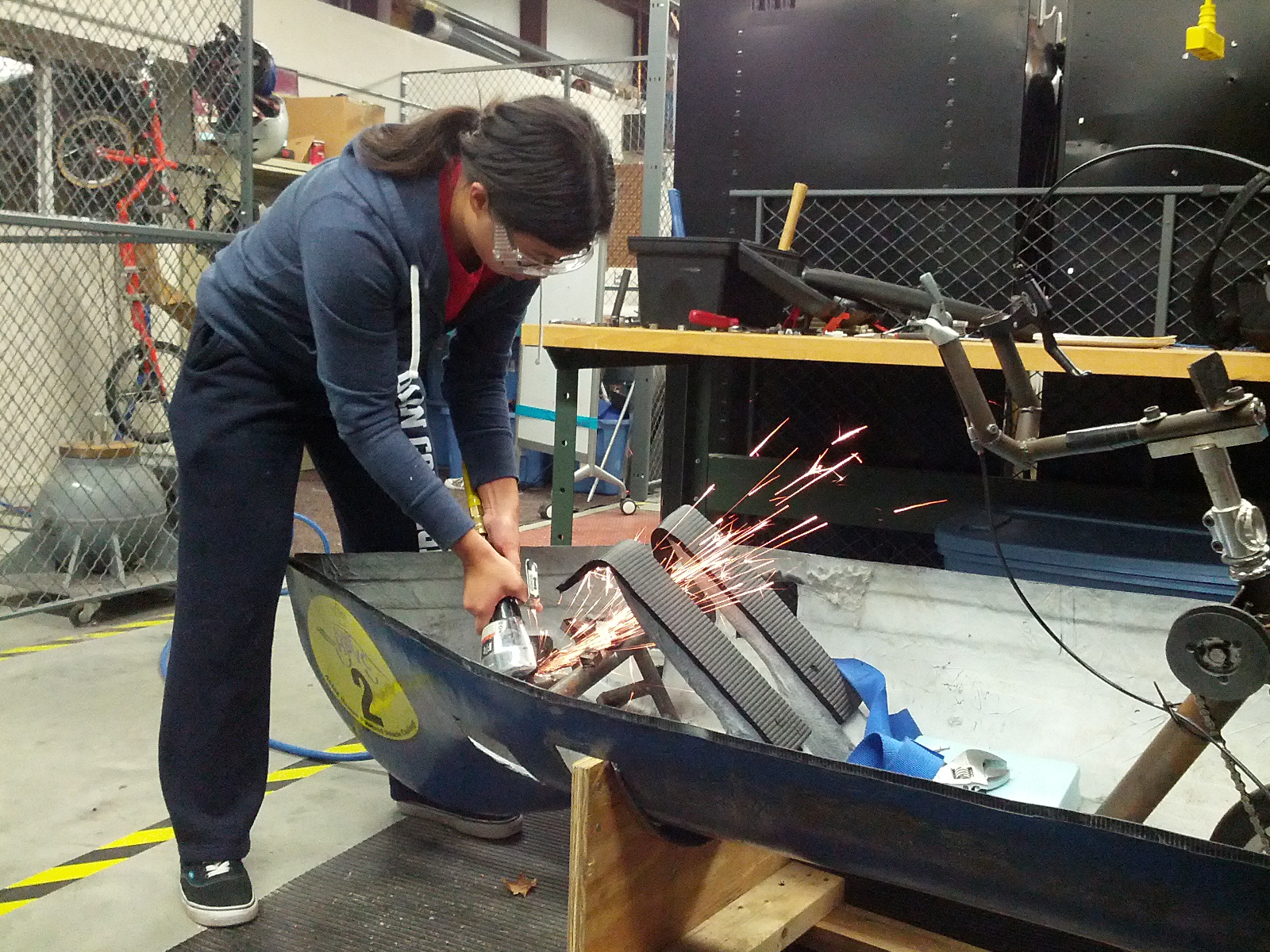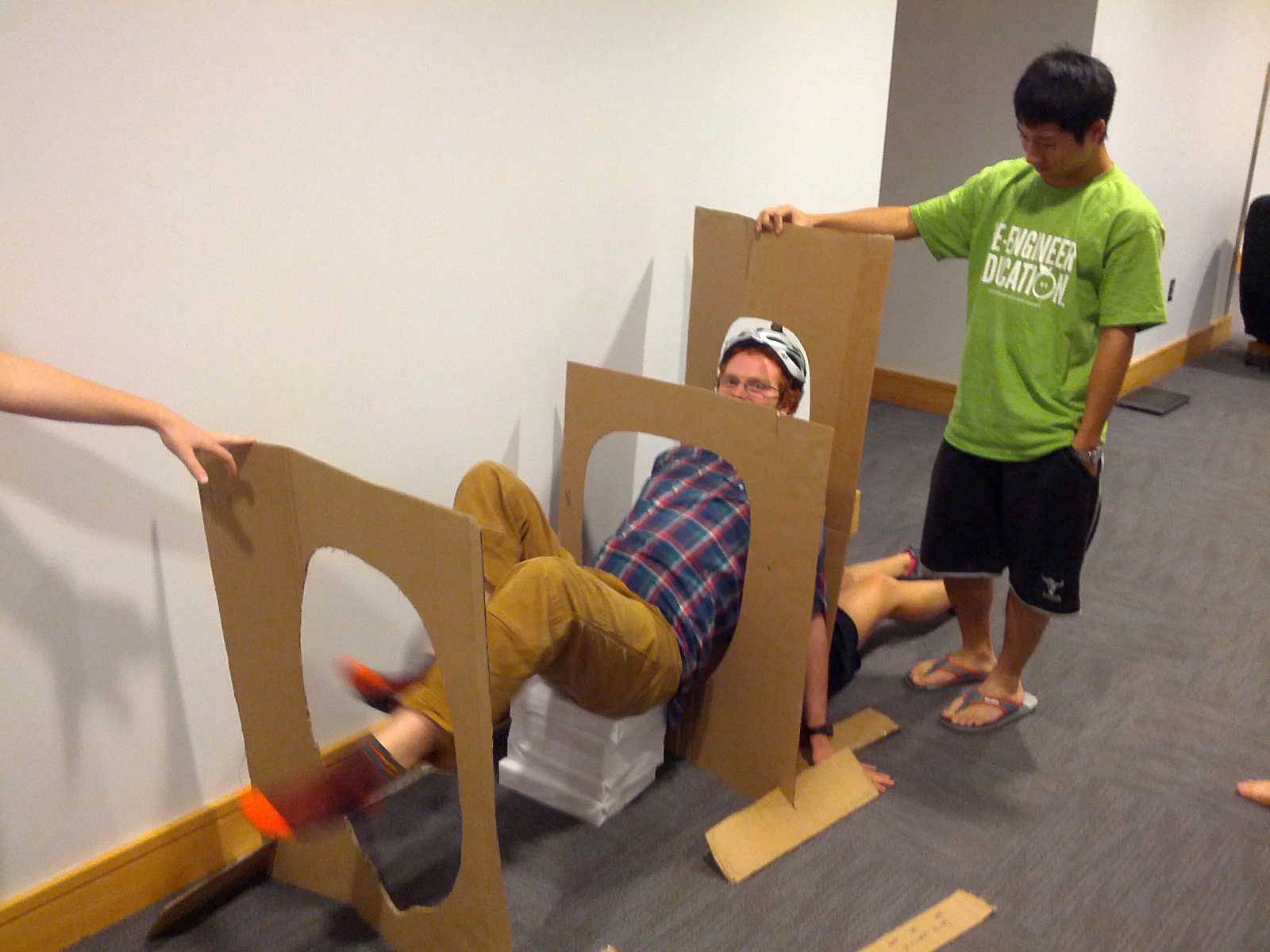November Progress
November 26, 2012

Fearing late-year, late-night machining sessions, the team has been proactive in fabricating the vehicle's slow-speed stability system (SSSS). The result of three Fridays of work is a nearly complete and functioning system. Preliminary performance is promising. Though the system is not free-sliding as hoped, it translates under the most extreme (perhaps not the most extreme) loading cases. The friction is largely caused by the spacing of three sets of bearings riding on the inner tube. Investigation of adjustable bearing spacing is planned.
The entire system is in need of a healthy dose of thread locker, and the system has small details to be refined (the landing gear's wheels don't spin). However, we are thrilled to see the design come together. We've incorporated a group of new machinists into the build process and expect this will benefit both the individuals and the team by year's end. An aside, our favorite part is the grooved output pulley, fully chamfered and pocketed.

Each year, teams arrive at competition with unplanned fairing modifications because some part of the bike-rider combo just won't fit. We've been that team, and we don't want to be that team. Nearly as bad is too much space. Last year, we were disappointed to find 6" of space above our tallest rider's head. Following fairing design, we cut cardboard cross-sections at the shoulders, hips, and feet and verified that we alloted enough but not too much space. We are quite happy with our results, though this by no means constitutes exhaustive testing.

Seabagel, our 2012 vehicle, was our first experiment with monocoque design and, understandably, we overbuilt it. This extra strength caused it to be extremely stiff and our riders last year noticed that the front wheel had a tendency to go airborne when we hit a bump in the road. We were concerned that the extreme stiffness negatively impacted the riders so much that Seabagel, while more aerodynamic and more solidly built, was actually slower than Shadowfax, the prior year's vehicle. To test this, we ran quarter mile drag races with different riders and compared their times on each vehicle. We concluded that we had successfully improved vehicle performance between 2011 and 2012 and that Seabagel was indeed faster than Shadowfax.

This drag racing test was a part of our initiative to train every member of the team to competently be able to ride our faired competition vehicles. This effort has two goals: to make vehicle testing easier with more people capable of riding, and to improve rider confidence and fitness in preparation for the competition in April. We have had team members riding during every Friday work time for the last few weeks, a schedule we intend to continue until the competition.
The team has three weeks from the end of Thanksgiving break to Olin's winter recess. During this time we plan to cut and assemble our fairing plug, finish landing gear fabrication and testing, start redesigning our adjustable pedals, and redeveloping our power measuring test rig in preparation for rider training season. We also have a students and professors design review coming up on November 29th, the slides from which we'll be posting after the event. Stay tuned for the next few weeks, they're going to be busy.
